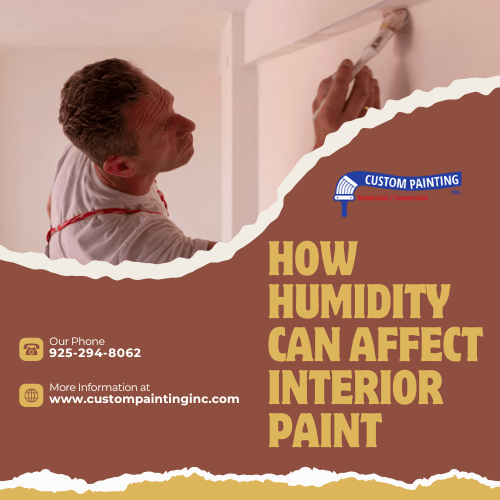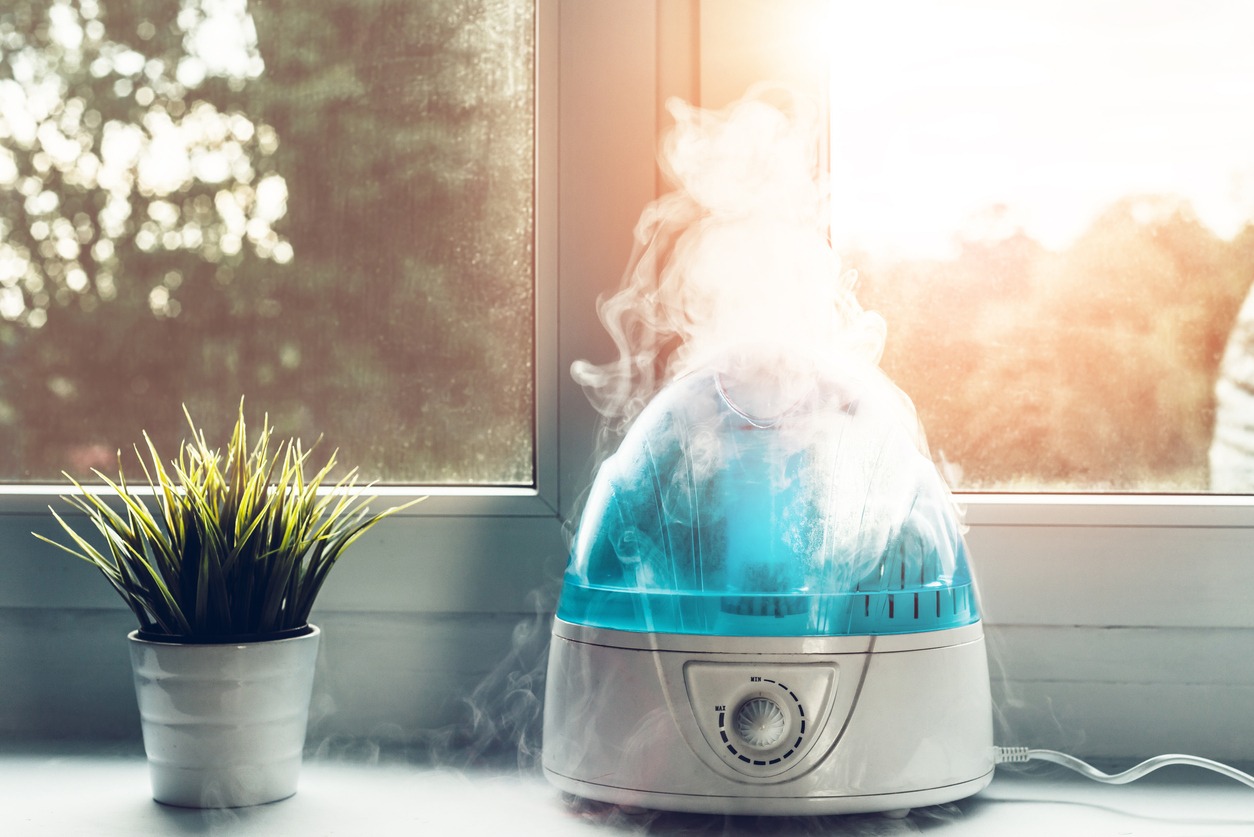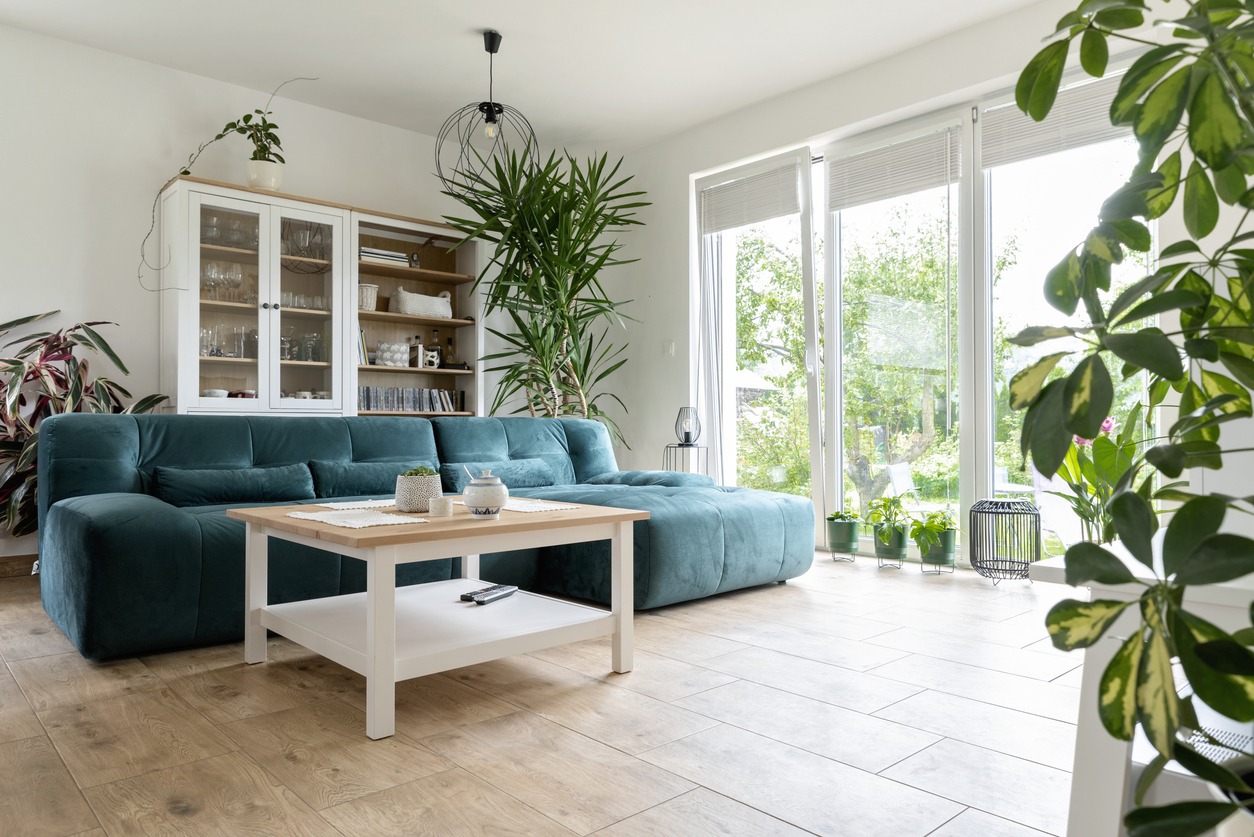When planning a new paint project, consider humidity. It is a crucial factor in the success and longevity of interior paint jobs. High or fluctuating humidity levels can cause issues like bubbling, peeling, or uneven drying, which can seriously impact the appearance and durability of the paint.
That’s why working with a professional painting company can be a game-changer—they know how to manage environmental factors, ensuring a flawless, long-lasting finish. With the right expertise, your paint job will look fresh and smooth, no matter the weather!
Understanding humidity and its impact on paint
What is humidity?
Humidity refers to the amount of moisture present in the air. It’s measured as relative humidity (RH), the moisture percentage in the air compared to what the air can hold at a given temperature. When humidity levels are high, excess moisture in the air affects how paint adheres, dries, and cures. High humidity causes paint to take longer to dry, as moisture in the air slows evaporation. This can lead to the paint incorrectly setting, affecting the final finish.
Humidity levels and paint quality
Both high and low humidity can create challenges for painting. High humidity (over 70%) can cause paint to stay wet for too long, leading to sagging, streaking, or trapping moisture under the paint, which can cause blistering later on. Low humidity, on the other hand, causes paint to dry too quickly, which may result in uneven finishes or brush marks. Ideally, painting in moderate humidity (40-50%) ensures smooth application and proper drying and curing.
Effects of high humidity on interior paint
High humidity can significantly affect interior paint in several ways:
- Longer drying times: High humidity slows moisture evaporation from the paint, causing it to take longer to dry. This extends project timelines and can increase the risk of dust, debris, or imperfections settling on the wet surface, compromising the finish.
- Poor adhesion and blistering: Excessive moisture in the air can interfere with the paint’s ability to bond well to surfaces. This lack of adhesion may cause blistering, peeling, or bubbling as the paint lifts off over time, requiring costly repairs or repainting.
- Increased likelihood of mildew: In humid areas, such as bathrooms and kitchens, damp conditions encourage mildew growth on painted surfaces. This issue detracts from the appearance and presents cleanliness and health concerns, particularly in poorly ventilated spaces.
To mitigate these effects, consider using paints formulated for high-humidity areas and ensure adequate ventilation during and after painting.
Effects of low humidity on interior paint
Low humidity can significantly impact interior paint application and the final finish:
- Faster drying times: Low humidity accelerates paint drying, making it hard to apply evenly. This fast drying often results in visible brush strokes or roller marks, as there’s less time to smooth out the paint before it sets.
- Cracking and flaking: Excessively dry conditions can cause paint to dry unevenly, which increases the risk of cracking or flaking as the paint cures. When the paint dries too quickly, the surface may harden before the underlying layers, weakening adhesion.
- Shrinkage and color variations: Rapid drying from low humidity can lead to paint shrinkage and color inconsistencies. This results in an uneven finish, with certain areas appearing slightly different in color or sheen.
To combat these effects, it’s beneficial to maintain moderate humidity levels during painting.
Ideal humidity levels for interior painting
Optimal humidity range
For interior painting, the ideal humidity level generally falls between 40% and 50%. At this range, paint adheres well, dries evenly, and cures properly. Higher humidity can slow drying times, leading to drips, runs, or uneven finishes. Too-low humidity, below 30%, can cause paint to dry too quickly, making it prone to cracking or an uneven surface.
Considerations for seasonal variations
Seasonal changes can affect indoor humidity, making certain times of the year more favorable for interior painting. In colder months, heating systems can dry out the air, reducing humidity levels, which may require a humidifier to maintain optimal levels. In humid summer months, using air conditioning or a dehumidifier helps maintain a stable environment. Spring and fall often provide the most balanced indoor conditions naturally, making them ideal for interior painting projects.
Managing humidity during interior painting
Managing humidity during an interior painting project is crucial for a smooth finish and proper curing. Here are some effective tips:
- Using dehumidifiers or humidifiers: Dehumidifiers can lower indoor humidity, which is beneficial in high-humidity climates or during rainy seasons. This helps paint dry evenly and prevents issues like blistering or bubbling. In contrast, if the air is too dry, a humidifier can prevent overly fast drying that may lead to cracking.
- Ventilation strategies: Ensuring good airflow helps control moisture levels in the room. Open windows when outdoor conditions allow or use fans to improve circulation. Proper ventilation can speed up drying time and help prevent the paint from trapping moisture.
- Timing application wisely: Plan your painting when humidity is naturally lower, such as late mornings or early afternoons on dry days. Avoid painting before or during rainy or humid weather, as high humidity can prolong drying and cause issues like streaking or inconsistent coverage.
How a professional painting company manages humidity challenges
Professional painting companies handle humidity challenges with a combination of assessment, specialized materials, and skilled application techniques:
- Pre-painting assessment: Before beginning a project, professionals assess the space and the ambient humidity levels, using tools like hygrometers to measure moisture in the air and walls. This step ensures they only proceed when conditions are optimal, preventing common humidity-related issues like bubbling or extended drying times.
- Selecting quality, humidity-resistant paints: In high-humidity areas, such as bathrooms and kitchens, professionals choose paints specifically formulated to withstand moisture. These paints often contain anti-mildew agents to resist mold growth, ensuring durability and a longer-lasting finish in damp environments.
- Experienced application techniques: Skilled painters adapt their application methods to humidity conditions. For example, they may use thinner coats, longer drying intervals between layers, and precise brush or roller techniques to ensure a smooth, even finish that withstands the challenges of a humid environment.
Conclusion
Humidity can significantly impact the quality and durability of interior paint, leading to issues like poor adhesion, bubbling, and a longer drying time if moisture levels aren’t managed correctly. Maintaining optimal humidity levels is essential for a smooth, lasting finish that will stand the test of time.
Partnering with a professional painting company can be invaluable. Experts know how to navigate challenging humidity conditions and use the right techniques and materials to ensure a beautiful, high-quality result. If you plan an interior painting project, consider consulting Custom Painting, Inc. for guidance and support. Call us at 925-294-8062 or message us here! You’ll get peace of mind and a finish you’ll love for years.



